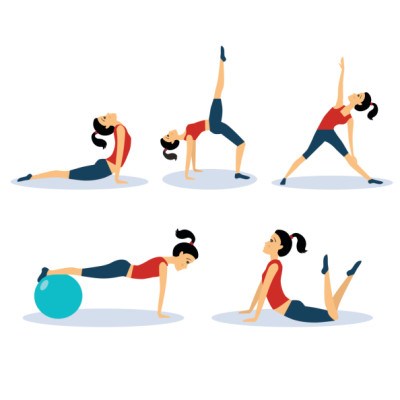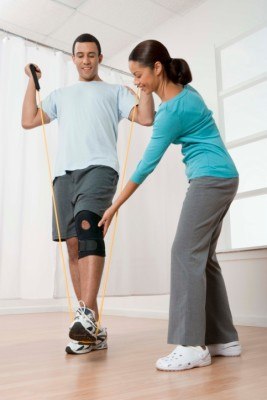Exercise Tips for Avoiding Painful Injuries
 Last week I got a text from my younger sister—she fell and broke her arm during her morning run. Ouch.
Last week I got a text from my younger sister—she fell and broke her arm during her morning run. Ouch.
I think we all know someone who’s endured an athletic injury–even during simple exercise. From plantar fasciitis to a torn rotator cuff, injuries impact almost all of us at some point in our lives. And some may argue that it is an inevitable risk of exercising, but by taking a few precautions, you can lower your risk of injury while working out.
Preparing Means Prevention
First, be sure to meet with your doctor to ensure it is safe for you to begin an exercise routine. Discuss any preexisting conditions you may have and risk factors associated with your age and current fitness levels.
Second, if you are just starting an exercise routine for the first time—or starting a new workout program—ease into it. As you exercise gradually, increase your intensity, duration, and frequency. Don’t over exert yourself too early, because you are more likely to injure yourself if you go as hard as you can too soon.
 Give cross-training a try. Adding some variation to your workout will help you not overuse one set of muscles. When you frequently repeat the same muscle movements it can lead to over-use injuries like tendonitis or stress fractures.
Give cross-training a try. Adding some variation to your workout will help you not overuse one set of muscles. When you frequently repeat the same muscle movements it can lead to over-use injuries like tendonitis or stress fractures.
Listen to what your body tells you. The “no pain, no gain” philosophy will most likely lead to injury. If something is really bugging you, stop your workout. Take a day and rest if needed.
Stretch. Try dynamic stretching before and after your work out. Dynamic stretching is when you are moving as you stretch—and holding it for 10 seconds—instead of staying in a static stretch.
During dynamic stretching, you usually perform movements similar to what you do in your workout, and it can help increase flexibility. Research is conflicting as to whether it can also help prevent injury. Either way, it’s best to stretch after you warm up and cool down.
Finally, take one or two days a week and rest. This gives your body a chance to recover and help prevent injuries. When you are sore and tired, your form can suffer, which increases your risk of getting injured.
 RICE: More than Just Takeout
RICE: More than Just Takeout
If you do develop a workout-related injury, follow the RICE method to prevent your injury from getting worse:
R: Rest the injury.
I: Ice the injury to reduce inflammation.
C: Compress the injury, using compression bandages, to decrease swelling.
E: Elevate the injury to lessen swelling.
Most injuries will heal on their own in about four weeks. If your injury has not begun to heal within one week, you may need to seek medical attention.
While your injury is healing, you don’t have to be benched from exercise. If you injured your shoulder, try exercising your legs or vice versa. After your injury is fully healed, be sure to ease back into your regular exercise routine. This will help protect you from re-injuring yourself. Remember that you’ve taken some time off, so be patient when getting back to where you were at physically.
We’re proud to bring you the freshest content on the web! Follow USANA on Twitter, like our USANA Facebook page and enjoy the latest videos on the official USANA YouTube channel.
 Learn what USANA is doing to make the world a better place.
Learn what USANA is doing to make the world a better place.
The future of personalized health and nutrition is now available with USANA’s True Health Assessment.










Leave a Reply
Want to join the discussion?Feel free to contribute!